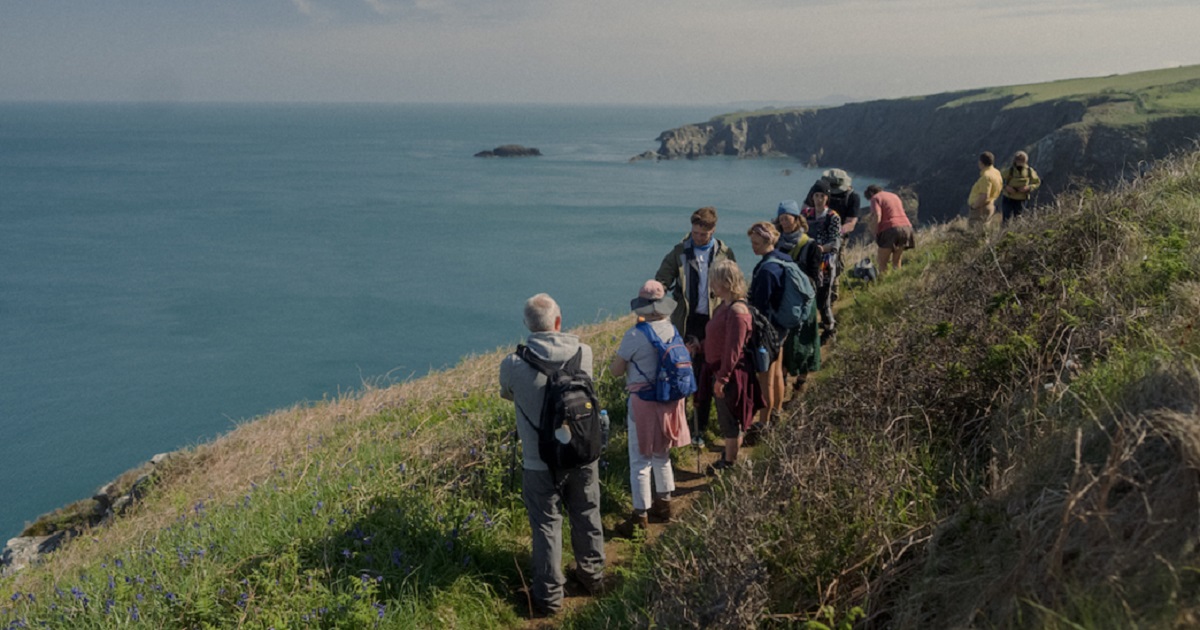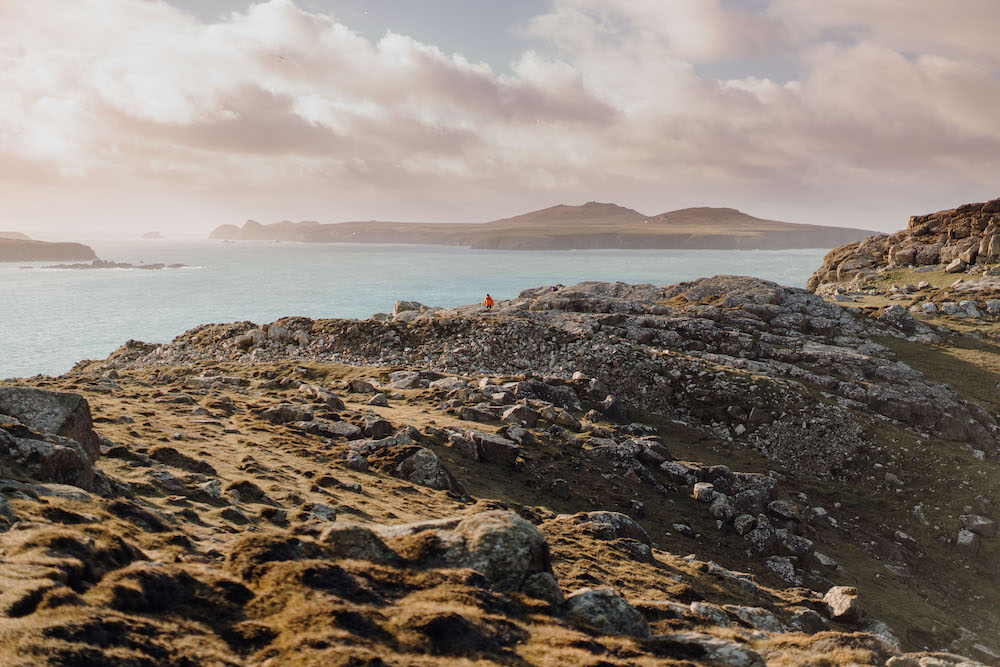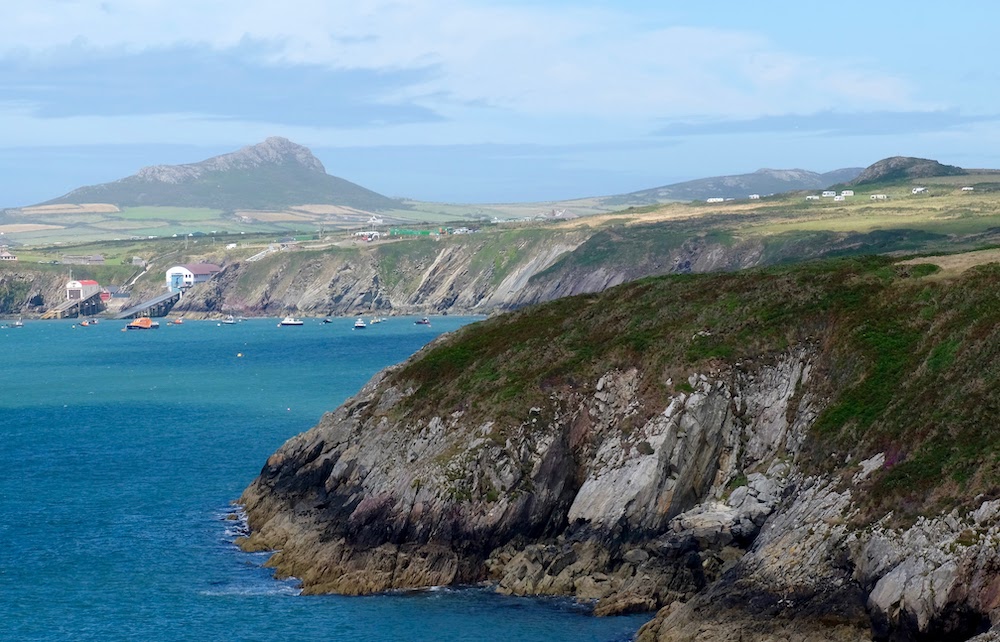Treading a pilgrim path

Jon Gower
The ancient well in the small village of Llanwnda near Fishguard in Pembrokeshire is a very special place. Stand there for a few minutes and you get a palpable sense of time standing still, or at least slowing down, the day unwinding slowly before you like pizza dough.
The well itself has recently been cleaned up, so that clear water runs in a stone-built channel, now unchoked of weeds.
The Scottish writer Alastair Moffat certainly understood the specialness of the place, remarking his book The Sea Kingdoms how the dolmen at Llanwnda ‘looks as though it is a door to the underworld which stands permanently ajar.
And, indeed, that may have been what the makers intended. The Celts believed that holy wells were portals to the Otherworld, and if they lifted their heads to look up the hill at Carreg Wastad, they may have seen another way in.’
It’s certainly a place where, as Moffat suggests, the old gods seem very close.
Deeply religious
I was taken to Llanwnda by David Pepper, who’s a project officer with the Wexford Pembrokeshire Pilgrim Way, a new route celebrating early Christian saints and also connecting two countries.
The journey is inspired by the relationship between St Aidan and St David and connects Ferns Abbey in Ireland with St Davids cathedral in Wales, linking both of these deeply religious places.
Later this month, on the 22nd October, there’ll be a specially facilitated 6 mile pilgrimage day to St David’s Cathedral. This will be a version of the pattern days in Ireland, where people select one day each year for going in procession to the shrine of their local saint.
Camino
Pilgrim routes can be very popular and seem to have grown in popularity after the various lockdowns.
No fewer than 300,000 walk the Camino route to Santiago de Compostela in Spain each year, with routes connecting with adjoining countries such as Portugal and France.
The Camino de Santiago has existed for over 1000 years, dating back to the 9th Century when the remains of St James the Apostle were first discovered in Northern Spain.
When it was impossible to travel to Jerusalem because of war, say, pilgrims would travel to Santiago instead, much as medieval pilgrims were advised that going twice to St Davids was equivalent to travelling once to Rome.

Inspired
David Pepper thinks something happens to people in a pilgrimage, even if you’re not religious or spiritually minded.
‘I think it starts with setting an intention and then you’ve already set your mind to it, you’re very present, and you’re walking alongside people. The barriers break down, things start to melt away, such as time and all those hangups in the modern world. They drift away especially when you’re walking through the landscapes that we have here.’
Walking parts of the new pilgrim route has certainly made David Pepper think differently.
‘It’s made me reflect on my life from the beginning, and going through higher education, and living abroad, what I’ve been up. I’ve got a background in the creative arts, linking with that as a source of inspiration as well, with artist and poets who have been similarly inspired by walking in such places over the centuries.’
There’s certainly a great deal to see along the 140 kms route, way from petrified forests and screaming tern colonies in Ireland to dramatic cliffscapes and wildlife on the Welsh side.
Not to mention the seabirds, seals and cetaceans such as porpoise and dolphins you can spot during the ferry crossing from Rosslare to Fishguard. There is even the chance of seeing a whale.
Sanctuary
As Pepper explains ‘One of the aims of the Wexford Pembrokeshire Pilgrim Way is to create a very green and sustainable tourism. One of the aspects we’ve been exploring is “sanctuary” where we stay in churches or village halls, outbuildings and farms and have even been lobbying bodies to create more affordable, flexible accommodation options.
‘Because typically a pilgrim would stay one night, use the local shop, go to the pub, and meet locals before moving on. It’s a very interesting way of connecting with a community. And they spend more than the average tourists because they’re walking on foot. So they’re spreading the wealth around and not in just one hotspot.’

Connections
Pilgrims on this route have not only to walk along roads and occasionally traverse terrain but also they have to cross the sea by ferry, as Pepper explains.
‘Throughout the route of the Wexford Pembrokeshire Pilgrim Way there’s a huge connection with water, be it the connection with the Irish Sea or the wellsprings that have been celebrated and sometimes fought over for centuries by people have lived here.
‘So you do find many of these timeless places. Even if you’re there for five minutes you can capture that feeling.’
Matters spiritual
It’s certainly a feeling you get at Llanwnda, where the partition between this world and another seems to be stretched very thin. It’s a place that certainly makes you pause to think about matters spiritual.
David Pepper maintains there’s a considerable contrast between the wells in Ireland and Wales.
‘There they’re more modernised and they’re very much used in today’s modern society and they’re very much used by the travelling community and people just go there to pray, to make wishes. Here they’ve got this mystical quality, they’re a bit lost, you have to search them out.’
You can find out more about the mass pilgrimage to St Davids here and can also buy tickets for the event here.
Support our Nation today
For the price of a cup of coffee a month you can help us create an independent, not-for-profit, national news service for the people of Wales, by the people of Wales.





One does not have to be a Christian to enjoy a pilgrimage. The route from Ynys Mon to St Nazaire and Nantes and then up the Loire to Orleans/Cenabum might appeal to those with longer memories…
There is an old unwritten story of an elderly Druid and his young apprentice making their escape from Julius Caesar’s legions via this route in reverse, from Cenabum down the Loire and round into Quiberon Bay, just in time to catch a ride aboard the last escaping Veneti ship after the disaster of the Battle of Morbihan and the long and dangerous voyage to the temporary safety of Ynys Mon…this is said to have happened in 56 BC but you never really know with legends…
The Bishop of London, Sarah Mullally tells it like it is about our wicked Government and the creature that is Therese Coffey’s shameful hiding of what must be a damning report on the health of the new King’s subjects. I hope that the Bishop of St Davids, Joanna Penberthy has regained her strength and her authority enough to return to the battle for the soul of the British/Welsh population…